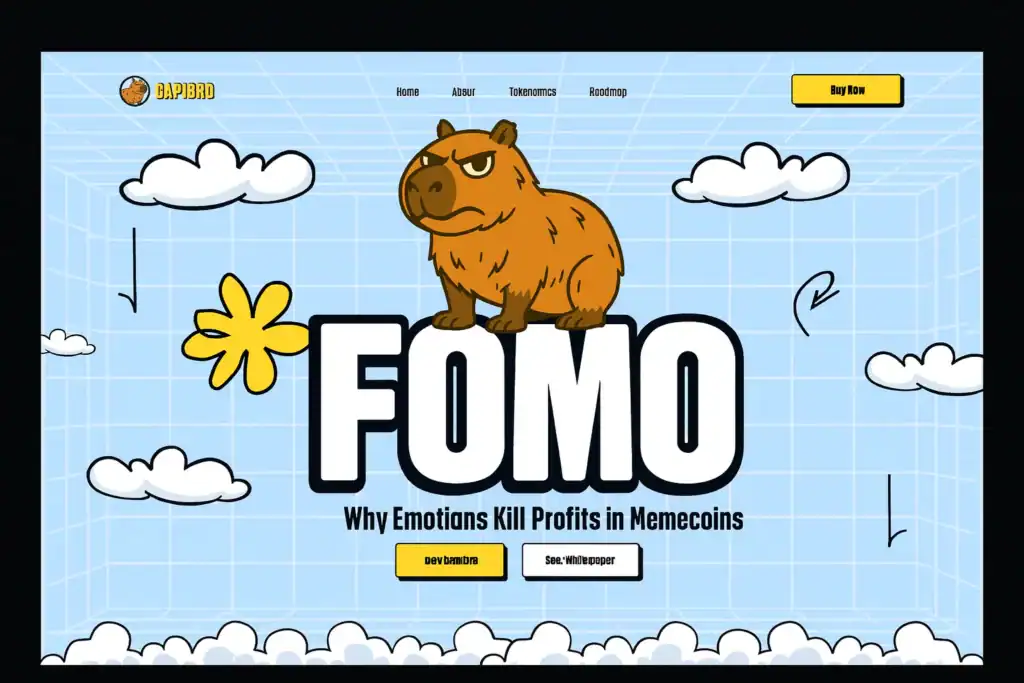FOMO Is Your Worst Trade — How Emotion Kills Profits in Memecoins

In the world of memecoins, FOMO isn’t just a passing emotion — it’s a persistent psychological trap that consistently erodes trader performance. While speed and timing are essential in this market, emotional interference like FOMO introduces delay, irrational decision-making, and exposure to unnecessary risk.
This article explores the behavioral psychology behind FOMO, how it manifests in real-time trading decisions, and how Cryptonim AI neutralizes emotional biases to extract alpha with cold logic.
1. The Psychology of FOMO: A Cognitive Vulnerability
FOMO — the Fear of Missing Out — is rooted in human evolutionary psychology. It is the brain’s reaction to perceived exclusion from reward. In trading, it’s typically triggered by the visible success of others — especially when social proof is amplified by:
Green candles and fast price movement
Screenshots of 10x wallet gains
Influencer tweets like “you’re still early”
Meme virality across Telegram and Twitter
Neurologically, FOMO engages the same reward circuitry as gambling: the dopamine system. But while dopamine creates motivation, it also fuels overconfidence and reactive behavior — leading traders to enter positions without a plan, without confirmation, and often without understanding the underlying risk.
2. The FOMO Cycle in Memecoin Trading
Memecoins are engineered for maximum velocity and psychological manipulation. Most tokens go from 0 to peak — and back — within 30 minutes. This timeline perfectly matches the FOMO loop:
Hope: “It’s only up 3x, I’m still early”
Greed: “It’s flying — I need a bigger position”
Disbelief: “That little dip is a shakeout”
Panic: “It’s dumping — should I sell?”
Regret: “Why didn’t I wait or exit earlier?”
This loop isn’t a theory — it’s observable daily across launches on pump.fun and bonkbot.io. Human traders overestimate upside, underestimate timing risk, and anchor to past highs.
The result? Poor entries, late exits, and emotional attachment to memes instead of mechanics.
3. Emotional Biases That Compound Losses
Beyond FOMO, most traders are impacted by other well-documented biases:
Confirmation bias — only seeking information that supports their trade
Recency bias — assuming the last 5 candles define the future
Anchoring — refusing to exit because “it was just at $700k”
Overtrading — impulsive rotations between tokens without edge
These behaviors are natural — but in hyper-fast environments like Solana memecoins, they are fatal.
4. How Cryptonim AI Removes Emotion From Execution
Cryptonim AI is not influenced by fear, greed, or social pressure. It operates purely on:
Tweet trend velocity (not emotional engagement)
Liquidity curve slope (not price alone)
Exit window metrics based on volatility decay
Risk profiles trained on thousands of launch-reaction cycles
When human traders react to the hype, Cryptonim AI is already positioned — either:
Auto-launching new tokens within seconds of meta triggers
Executing exits at peak volatility thresholds
Reinvesting via Chain Mode into next high-probability setup
Cryptonim doesn’t guess. It doesn’t feel. It calculates.
5. Case in Contrast: Human vs Cryptonim AI
Human trader: sees a meme post about $PEPE20, buys late at $480k cap, exits in panic at $210k, shares regrets on Twitter.
Cryptonim AI: launched a separate $PEPO token 90 seconds after tweet, sold 3 staged tranches at $270k, $410k, and $520k.
The difference wasn’t access — it wasemotional detachment and strategic execution.
6. How to Kill FOMO as a Trader
While most traders cannot completely eliminate emotion, they can override it by adopting AI-driven process logic:
Pre-define your exit strategy before entry
Never enter based on what others show — only what the chain confirms
Use tools like Cryptonim to let AI monitor narrative shift and tweet decay
Avoid averaging down or revenge buys — this is not the Nasdaq
Ultimately, FOMO is strongest when there is no plan. The moment you have a repeatable system, fear has less room to grow.
In the world of Solana memecoins, FOMO is your worst trade. Emotional trading leads to poor entries, late exits, and massive losses. Unlike humans, AI removes emotion from execution, replacing fear and greed with cold logic. Tools like Cryptonim AI use tweet velocity, liquidity curves, and volatility decay to auto-launch and exit at peak moments. This is not speculation — it’s structured automation that turns psychological weakness into profit. If you’re still trading by feeling, you’re already behind.
7. Conclusion: Emotion Is the Opponent
The most dangerous force in crypto trading isn’t volatility — it’s yourself.
Every red candle triggers panic. Every green one invites greed. But neither defines profit — logic does. Cryptonim AI gives traders an execution edge by replacing emotional reactivity with structured automation. It observes. It reacts in milliseconds. And it never hesitates.
Your worst trade is the one you feel the most.
Let Cryptonim AI feel nothing — and execute everything.
